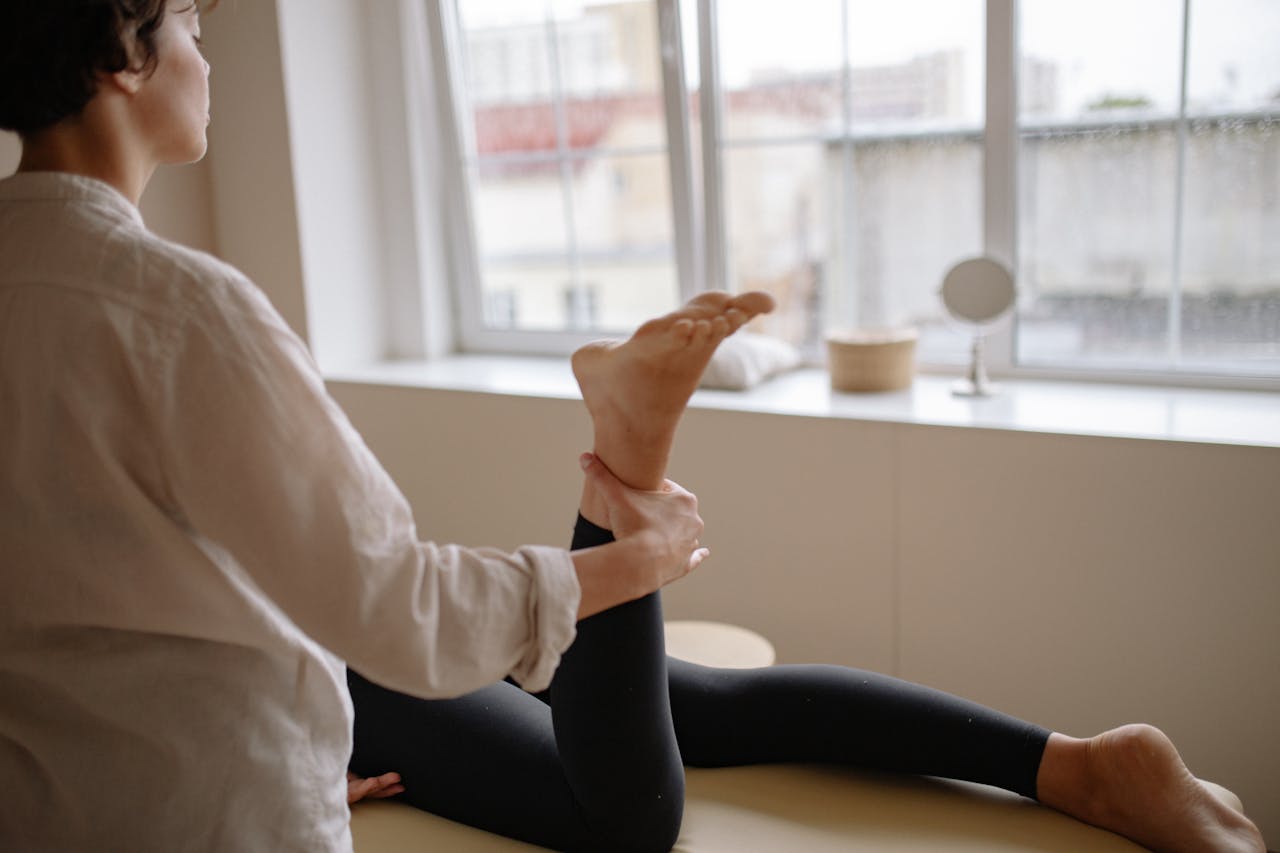Therapeutic exercises are movements, physical activities, and stretches designed to restore normal movement in a joint, increase strength where weakness is present, or decrease pain that is impairing the patient’s range of motion. Usually, patients receiving physical therapy for an injury or a chronic condition, have therapeutic exercise incorporated into their treatment plan by their therapists.
The physical therapist talks with the patient, performs functional tests to assess their condition, and works with them to develop a regimen of therapeutic exercises to promote healing and improve general strength or flexibility. CPT codes are standardized medical codes used by physical therapists to bill for their services. In this blog post, the CPT code 97110 for therapeutic exercise and its usage is covered, along with a brief look into the recently introduced remote monitoring CPT codes.

What is CPT code 97110?
CPT code 97110 is officially defined as “therapeutic exercises to develop strength, endurance, range of motion, and flexibility.” It can be applied to single or multiple body parts and requires direct contact with a qualified medical professional.
Therapeutic exercises include:
- Range-of-motion exercises (passive, assisted, and active)
- Progressive resistive exercises
- Balance or Strength training
- Aerobic conditioning
Similar to other CPTs, 97110 is billed in increments of 15 minutes, beyond the 8-minute rule of direct contact work with the patient. The eight-minute rule is a way to calculate how many units of time-based services a patient has availed in one visit. The therapist must perform the service for a minimum of eight minutes in order to count toward one full unit.
The reimbursement rate for CPT code 97110 is $31.40.The following information must be included in the Physical Therapy Notes to justify reimbursement of this CPT:
- A diagnosis to support Physical Therapy such as muscle weakness and impaired mobility.
- Target therapy exercise is aimed at developing strength and endurance, increasing or maintaining range of motion and flexibility.
- The therapist spends time directly with the patient administering the therapy services.
Modifiers GP(Outpatient Physical Therapy), GO (Outpatient Occupational Therapy), GN (Outpatient Speech-Language Pathology), CO (Outpatient Occupational Therapy by an Occupational Therapy Assistant (completely or partially)), CQ (Outpatient Physical Therapy by a Physical Therapist Assistant (completely or partially)), can be used for CPT code 97110.
The 97110 CPT code can be used for physical and occupational therapy, as well as chiropractic services. The 52 modifier should never be used with the 97110 CPT code if the therapy service time is less than 8 minutes.
The CPT code 97110 therapeutic procedure
CPT 97110 is a set of exercises and therapeutic procedures that will allow an injured person’s strength and ability to move around to be restored. The procedure could cover one or more parts of the body and involves direct contact with a qualified healthcare professional.
The following types of exercises are included:
- Strengthening Exercises— Biceps Curls, Shoulder Press, Bent over row, squats, bridging
- Endurance Exercises— Treadmill, Cycle Ergometer
- ROM—- Passive, Active Assistive, Active
- Flexibility Exercises—- Forward lunges, Side lunges, Knees to chest
Therapists use this code when they create a set of exercises that restores flexibility, strength, endurance, or range of motion in one or more areas of the body. Examples of exercises that may be billed under this code include using free weights to increase arm strength and walking on a treadmill to build endurance.
What documentation is required for the 97110 CPT Code?
For documenting CPT 97110, there are a few requirements that need to be kept in mind. The body part/s treated must be included, specifying the muscles and/or joints. The specific exercises that were performed must also be listed. For example, CPT 97110 activities could include:
- active, assisted, or passive range of motion for improved joint mobility.
- resistance exercises that build muscle strength and endurance
(to be specified whether isometric, isokinetic, or isotonic) - stretching exercises that improve flexibility
(type of stretch needs to be specified – active, ballistic, pre-contraction, or other) - exercise to improve heart and lung health, such as walking on a treadmill or using an arm ergometer.
The purpose of each exercise in relation to achieving a specific functional goal needs to be mentioned. Therapeutic exercises aim at improving a single parameter such as ROM or increasing strength as opposed to an overall improvement in the capability to perform a specific task (therapeutic activity). Progressive therapy exercises will result in being able to perform real-life movements like ADLs. But tasks like ADLs, work activities, and other pursuits are included in CPT 97530 Therapeutic Activities.
For CPT 97110 documentation, it is necessary to provide information about the volume and validation of the exercise. This means recording the number of sets and repetitions, the amount of resistance (weight, force, or torque) used during each set, and the duration of the hold. The technique for determining resistance in this instance should also be mentioned. One common approach is to use a percentage of the patient’s one-rep max or their maximum voluntary isometric contraction.
Lastly, a description and subsequent changes in how the patient felt at the end of the exercise including muscle tightness should also be documented.
Introduction of Remote Therapeutic Monitoring
With the evolution of remote therapy practices and the adoption of advanced technologies like motion tracking and AI to aid with physical therapy, the CMS has added new CPT codes to cater to this new field. Remote Therapeutic Monitoring (RTM) services deal with musculoskeletal conditions and respiratory systems. It is not intended to act upon the body’s physiological processes. Rather, its focus is on therapy, adherence, and response rates.
Like the existing Remote Patient Monitoring (RPM), RTM will involve patients wearing sensor-equipped devices at home to monitor their health. RTM’s billing structure is also similar to RPM’s. One notable aspect is that unless clinical staff are directly supervised by a physician or other qualified professional, they cannot provide RTM services. Currently, only physical therapists, occupational therapists, dietitians, clinical psychologists, and other QHCPs can bill for services under RTM.
Following are the 5 most common RTM CPT codes.
98975: Initial Set-up and Patient Education
Includes instruction in the use of equipment, as well as its installation and setup.
98976: Supply of Device for Monitoring Respiratory System
Includes supply of device(s) along with scheduled (e.g., daily) recording(s) and/or programmed alert(s) transmission to monitor the respiratory system, every 30 days.
98977: Supply of Device for Monitoring Musculoskeletal System
Supply of device(s) along with scheduled (e.g., daily) recording(s) and/or programmed alert(s) transmission to monitor the musculoskeletal system, every 30 days.
98980 – 81: Monitoring / Treatment Management Services
Includes treatment management services provided by a physician or qualified healthcare professional in a calendar month with at least one interactive communication with the patient or caregiver during the calendar month. The initial 20 minutes are billed under 98980 and each additional 20 minutes after that are billed under 98981.
Different reimbursement rates are applied to different CPT codes based on the level of skill and time needed to complete a given therapy session. Some activities require more knowledge than others and must be performed by a professional. Some exercises could be guided by evolved Physical Therapy technology platforms such as Kemtai, which use motion tracking technology coupled with AI to deliver exceptional virtual exercise services that markedly improve patient adherence and free up the therapist’s bandwidth, boosting productivity.

 7 min reading
7 min reading


